How the 'Kingdom of the Planet of the Apes' movie sometimes put the cast in real danger
You'd think that the two stars of "Kingdom of the Planet of the Apes" (in theaters now), the latest installment in the 56-year-old sci-fi franchise, would want to talk a lot about apes.
But no. We're talking leeches here, people.
"The leeches were disgusting!" says Owen Teague, who plays "Kingdom" ape protagonist Noa, literally cringing at the memory.
As you can imagine, "Kingdom" is rife with impressive computer-generated magic, thanks to Wētā FX, the New Zealand firm that conjured the imaginary worlds of "Lord of the Rings" and "Avatar." But the leeches encountered by the actors during six months of filming in locations that included Australian jungles were all too real.
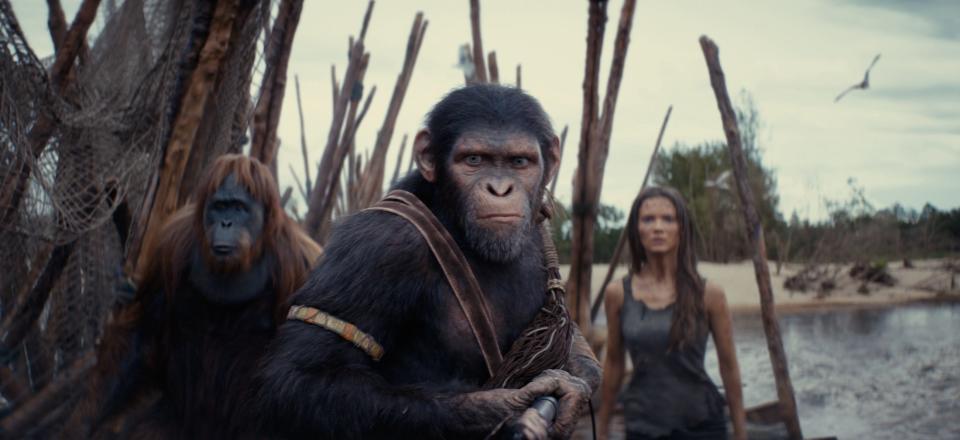
"They were everywhere. If you saw any grass, the leeches would be there," says Freya Allan, who plays Mae, a human fighting to reconnect with others like her on a planet ruled by apes. "At least Owen had a suit on (a Lycra shell to which motion capture balls were attached), but my costume had nothing but holes in it."
But leeches weren't the only real-world hazard in this fantasy shoot. "At one point, someone had to gently brush a white-tailed spider off my face, so that was pretty scary," says Teague.
And then there were the rogue eucalyptus tree branches. The tall scented trees often drop their limbs, especially when winds kick up. "We were in and around the trees a lot, so they were always a concern," says Allan. "I honestly didn't think I'd be worrying about trees. But we were."
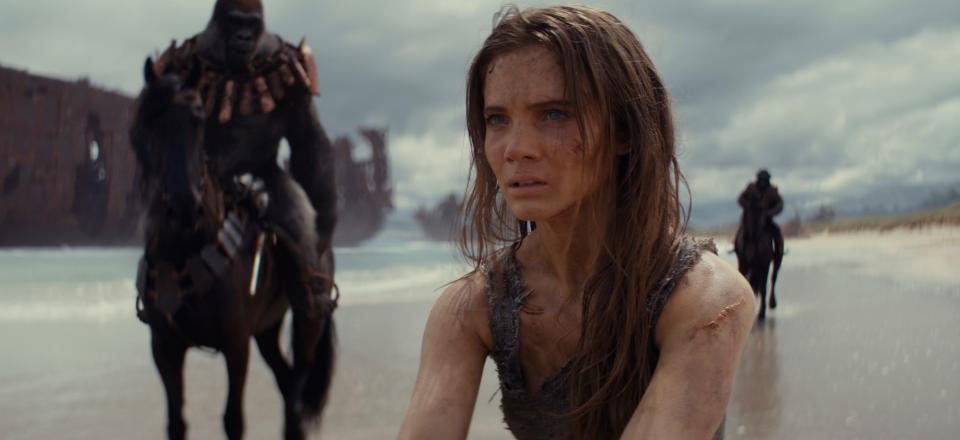
In fact, one cascading limb almost seriously injured a crew member, says "Kingdom" director Wes Ball. "That was not a good thing, that was a close call," he says somberly. "It almost hit someone."
The dazzling 'Kingdom of the Planet of the Apes' is a mix of real locations and fully computer-generated scenes
Those dangers aside, shooting in real locations is partly what renders "Kingdom" so compelling. Deciphering which scenes are real and which are computer-created is difficult. There are stunning sequences in what is truly an Eden-like paradise provided by the Australian setting. But other scenes, such as those by a river, featured no real water at all.
"I always tried to be on a real location if we could," says Ball. "That said, there are 35 minutes of the movie where every blade of grass and leaf blowing in the wind was created in a computer. But hopefully no one notices that. You don't want people saying, 'Hey those were pretty visual effects.'"
Advances in so-called mo-cap (or motion capture) technology in films such as "Avatar: The Way of Water" is what allowed Ball to create his simian world. Actors were outfitted with thin suits dotted with small balls to allow computers to accurately place ape skin. Head-mounted cameras captured the action in front of them.
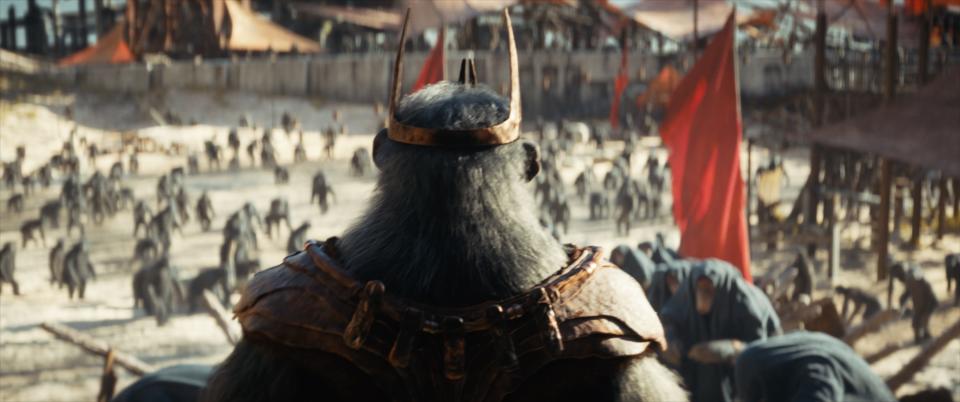
The result, if perhaps tough to imagine, is a movie set where the human star, Allan, is interacting with other humans who are covered in balls while acting as apes.
For Teague, that meant changing his voice and speech patterns, while also developing a body language that mimicked a chimpanzee's natural posture: shoulders slightly hunched, body leaning to one side.
"You're not impersonating an ape, you're creating a character who happens to have ape-like characteristics," says Teague. "You spend so long doing it that you just forget all that and accept that the character is who he is."
Allan insists acting opposite a man playing an ape was effortless. "Every part of Owen is in that ape," she says. "Sure, he might not look like one, but the effect for me was absolutely incredible."
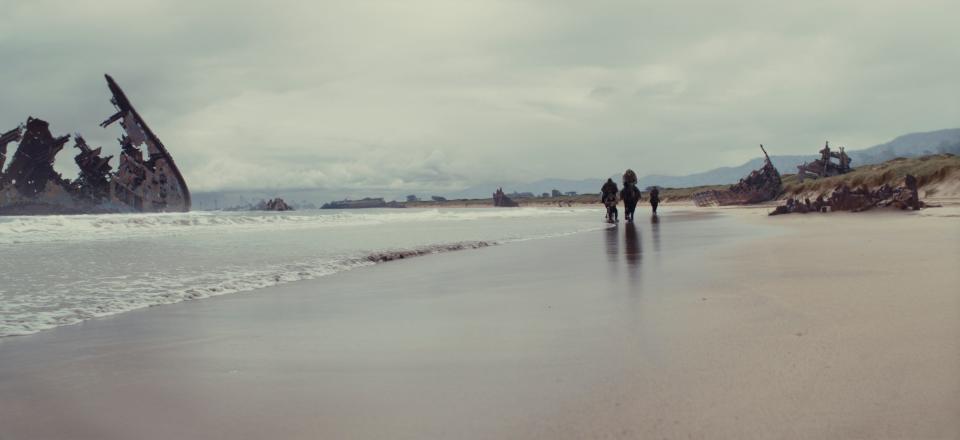
'Kingdom of the Planet of the Apes' director Wes Ball wasn't sure if making another installment was wise
This latest installment almost didn't come to pass. Ball's immediate thought when contemplating a new series of "Apes" films after the last trilogy concluded in 2017: Why bother?
"The last one ('War for the Planet of the Apes,' directed by Matt Reeves) was so well done and wrapped up the story of (ape leader) Caesar. To just do another movie tied to some of those characters felt wrong," Ball says. But the previous nine films have grossed more than $2.1 billion worldwide, according to The Numbers. "So we needed to expand this world."
He decided to start his film "a few generations in the future," featuring a peaceful clan of eagle-training chimps suddenly enslaved by a war-mongering group of primates from across the valley.
Into this mix comes Mae, who has retained the ability to speak, unlike most of the feral humans whom the apes hunt for sport. Noa and Mae team up to help each other with their respective missions.
While every "Apes" movie offers a critique of the human condition, Ball says his aim wasn't to lecture.
"Spectacle and truth, that's what I was after," he says. "This series is about humanity, that we see ourselves, the good and the bad, in these apes. I want to simply immerse people in this world fully."
Given that the ending of this new installment clearly hints at a sequel (or two), that immersion will require the return of his actors. And another battle with those leeches.
Are Allan and Teague game?
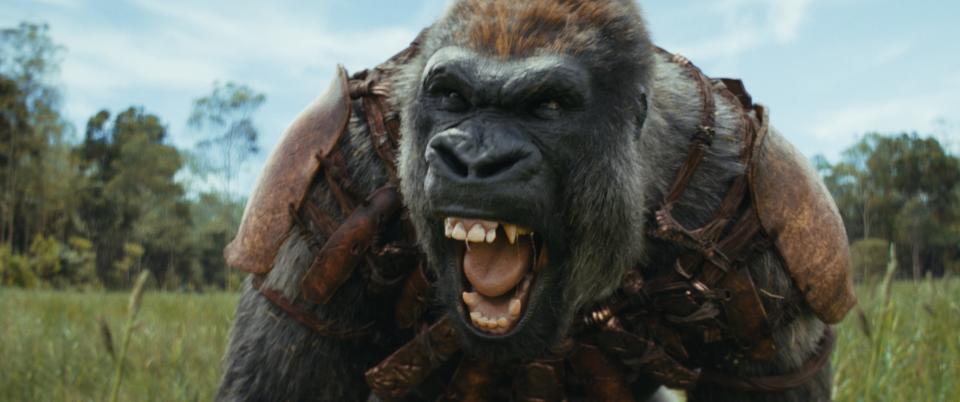
"Hey, bring it on, they can have another go at me," says Allan with a laugh.
"And I'll take another white tail spider to the face!" Teague adds.
Ball laughs when told of his stars' responses.
"Good to know," he says. "And, hey, it's a small price to pay. You don't want to work in front of a blue screen in a studio? Well, you're then going to have to get out in the real world and get some leeches on you."
This article originally appeared on USA TODAY: 'Kingdom of the Planet of the Apes' main characters talk movie dangers
